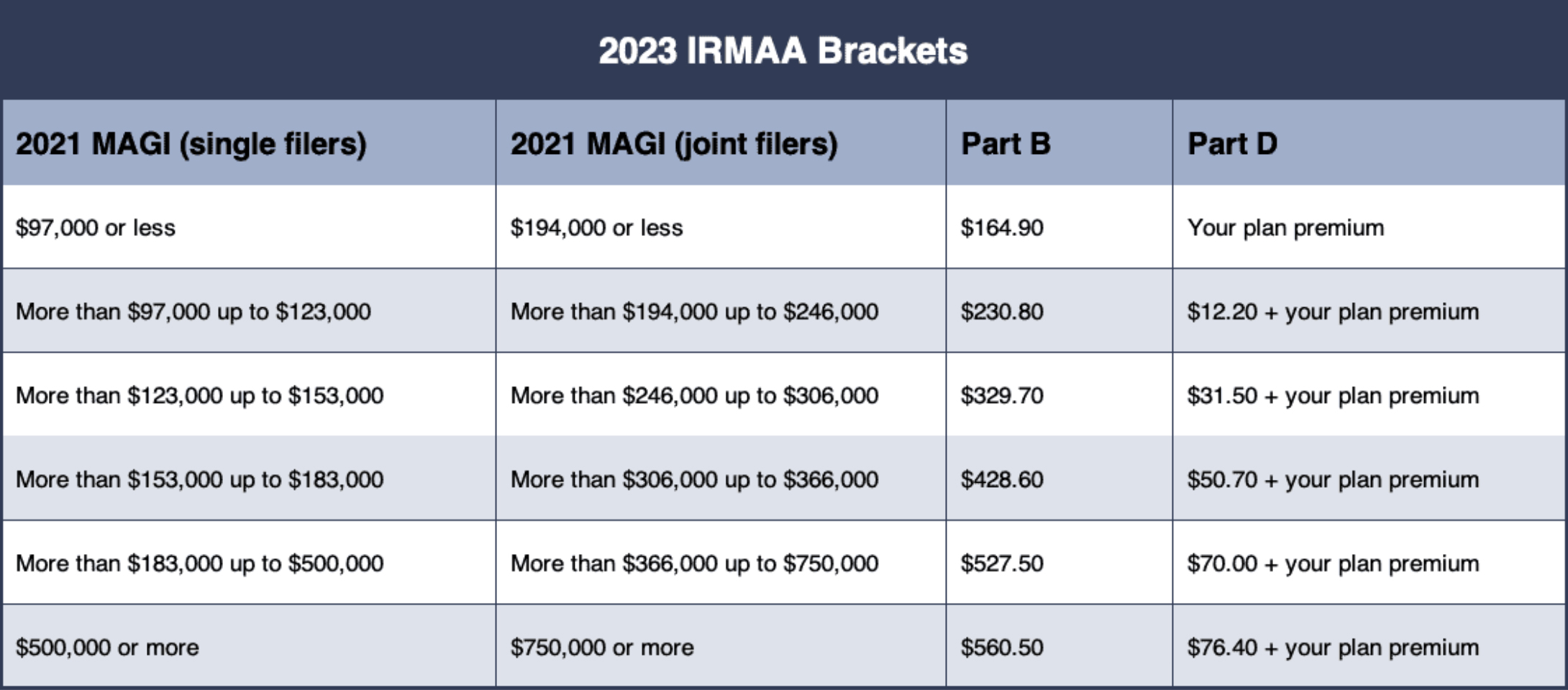Future trends: how security brackets might evolve and affect Medicare beneficiaries
A Comprehensive Guide to Browsing IRMAA Brackets and the Appeal Process
Navigating the intricacies of the Income-Related Monthly Adjustment Amount (IRMAA) can be a challenging task for Medicare recipients. Recognizing how earnings thresholds influence premiums is critical for effective monetary preparation. Lots of individuals might not realize the implications of higher revenues on their medical care prices. As they discover the subtleties of IRMAA and the charm procedure, they may uncover essential approaches to manage their costs much more efficiently. This guide will certainly brighten the course forward.
Comprehending IRMAA: What It Is and Just how It Functions
The Income-Related Monthly Adjustment Amount (IRMAA) is an important part of Medicare that affects recipients with greater earnings. This modification is created to make sure that people that earn over a particular threshold add even more in the direction of their Medicare Part B and Part D premiums. The IRMAA operates a gliding range, indicating that as a recipient's income rises, so does their costs quantity. This approach intends to advertise equity in the Medicare system by dispersing prices according to income levels.
The Social Safety Management establishes IRMAA based on the recipient's changed changed gross earnings from 2 years prior. If people discover themselves encountering an unexpected rise in their premiums due to IRMAA, they may have alternatives for charm. Understanding the nuances of IRMAA is necessary for recipients, as it straight affects their regular monthly medical care costs and economic preparation associated to Medicare coverage.
Income Braces and Their Influence On Medicare Premiums
While numerous beneficiaries rely upon Medicare for important healthcare protection, income braces substantially affect the costs they spend for Component B and Component D. The Centers for Medicare & & Medicaid Provider (CMS) develops these brackets based on modified adjusted gross revenue (MAGI) from 2 years prior. As beneficiaries' earnings levels increase, so do their costs, commonly resulting in higher costs for those making above certain limits.
For 2023, individuals making over $97,000 and pairs earning over $194,000 face raised premiums, with rates escalating through various tiers. This structure aims to guarantee that higher-income beneficiaries contribute even more toward the expense of their coverage. Consequently, understanding these revenue braces is critical for beneficiaries, as it directly impacts their monetary planning and medical care access. Understanding of how income degrees affect Medicare premiums can help beneficiaries browse their options and stay clear of unforeseen expenditures associated with their healthcare insurance coverage.
How IRMAA Is Determined: A Detailed Malfunction
Recognizing how IRMAA (Income-Related Monthly Adjustment Amount) is computed is important for Medicare beneficiaries dealing with increased premiums. The computation starts with the recipient's customized readjusted gross earnings (MAGI), that includes adjusted gross earnings plus tax-exempt rate of interest. This revenue is assessed based upon the most current tax return, normally from 2 years prior.
The Social Security Administration (SSA) categorizes recipients into various IRMAA braces, each matching to a certain MAGI array. As revenue increases, so does the premium modification, bring about greater regular monthly expenses for Medicare Component B and Part D.
Beneficiaries might discover their IRMAA amount on their Medicare Costs Expense. It is important for people to remain notified regarding their earnings condition, as variations can affect their IRMAA calculations and ultimately their health care expenses. Recognizing these steps help in reliable monetary preparation for Medicare beneficiaries.

Browsing the Appeal Process: When and Exactly How to Appeal IRMAA Determinations
Browsing the charm process for IRMAA resolutions can be a crucial action for beneficiaries that think their earnings analysis is inaccurate. Launching a charm needs understanding the details grounds for contesting the IRMAA decision, which commonly focuses on income discrepancies or certifying life occasions that might impact one's revenue level. Recipients should collect appropriate documents, such as income tax return or proof of earnings adjustments, to validate their cases.
The allure should be submitted in contacting the Social Security Management (SSA) within 60 days of the initial decision. It is very important to comply with the SSA's standards very carefully, consisting of offering your Medicare number and clear information concerning the appeal. When sent, the SSA will examine the instance and alert the beneficiary of their decision. If the charm is unsuccessful, additional steps, consisting of a reconsideration request or a hearing, can be sought to make sure all opportunities are explored.
Tips for Taking Care Of Medical Care Expenses Associated With IRMAA
As recipients encounter boosted medical care prices as a result of IRMAA, executing effective strategies can help handle these costs extra effectively. Assessing one's revenue consistently is crucial; variations may qualify individuals for lower IRMAA brackets. In addition, discovering options such as Medicare Financial savings Programs or state support can provide financial relief.
Beneficiaries must likewise take into consideration making use of precautionary solutions covered by Medicare to lessen unanticipated medical care costs - appealing irmaa. Engaging with healthcare companies to discuss treatment plans and prospective alternatives can better lower expenditures
Making the most of making use of Health and wellness Cost savings Accounts (HSAs) or Adaptable Investing Accounts (FSAs) permits for tax-advantaged savings for medical costs. Last but not least, beneficiaries should stay enlightened about adjustments to Medicare policies and IRMAA limits, which can influence general medical care costs. By proactively handling these facets, recipients can mitigate the economic burden connected with IRMAA.
Often Asked Inquiries
Can IRMAA Affect My Social Safety Benefits?


What Occurs if My Revenue Modifications After IRMAA Resolution?
If an individual's revenue changes after IRMAA resolution, they might qualify for a reduced premium brace. They can appeal the choice by giving documents of the earnings change to the Social Security Management for testimonial.
Exist Exceptions for IRMAA Calculations?
There are limited exemptions for IRMAA computations, primarily based on life-altering occasions such as marital relationship, divorce, or death of a partner (security brackets). Individuals might require to provide documentation to get these exemptions during the testimonial procedure
Exactly How Typically Does IRMAA Modification?
IRMAA changes every year, generally based upon earnings changes reported to the internal revenue service. These modifications show rising cost of living and modifications in revenue limits, affecting individuals' premiums for Medicare Part B and Component D annually.
Can I Obtain Support With IRMAA Payments?
Individuals might seek support with IRMAA settlements via financial consultants, social services, or Medicare resources. Numerous programs exist to aid manage prices, guaranteeing people can access required health care without unnecessary monetary problem.
The Income-Related Monthly Adjustment Amount (IRMAA) is a critical component of Medicare that impacts recipients with greater earnings. The IRMAA runs on a sliding range, suggesting that as a recipient's earnings security brackets rises, so does their costs quantity. The Social Security Administration identifies IRMAA based on the recipient's customized changed gross earnings from two years prior. Browsing the appeal procedure for IRMAA resolutions can be an important step for recipients who think their earnings evaluation is inaccurate. Launching an allure requires recognizing the details premises for opposing the IRMAA decision, which typically revolves around income inconsistencies or qualifying life events that might influence one's revenue level.